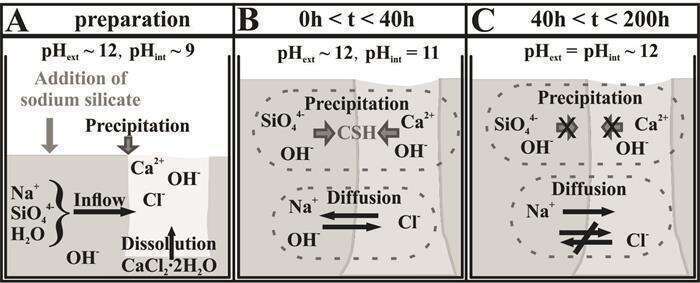Chemical gardens are plant-like structures produced by a variety of different metal salts when immersed into a solution of certain anions, the most investigated of which is silicate. The resulting precipitates are usually hollow tubules, which have been characterized extensively with respect to morphological and textural aspects. By contrast, only little information is available on dynamic time-dependent processes in these self-assembled systems. In a recent study[1],we have developed a novel procedure to grow cobalt-based silica garden tubes with well-defined macroscopic dimensions, allowing for straightforward sampling and in-situ analysis of the two solutions separated by the tube walls.
In the present work we have extended this approach to prepare silica gardens using calcium salts, as the mechanisms observed in this system are expected to be very similar to those underlying Portland cement hydration. The time-dependent distribution of ionic species in both compartments was traced on-line by pH and potential measurements, while concentration profiles were determined by means of atomic emission spectroscopy and ion chromatography. Further, temporal changes in the structure and composition of the tube walls were monitored by ex-situ characterization methods such as electron microscopy, EDX spectroscopy and X-ray diffraction.The obtained results paint a consistent picture and shed novel light on dynamic dissolution, diffusion and precipitation processes that occur across calcium silicate membranes resembling those found in cementitious materials.

Figure 1: Schematic description of dynamic processes in Ca2+-based silica gardens.
[1] F. Glaab, M. Kellermeier, W. Kunz, E. Morallon, J. M. García-Ruiz, Angew. Chem. Int. Ed. 51 (2012), p. 4317
werner.kunz@ur.de